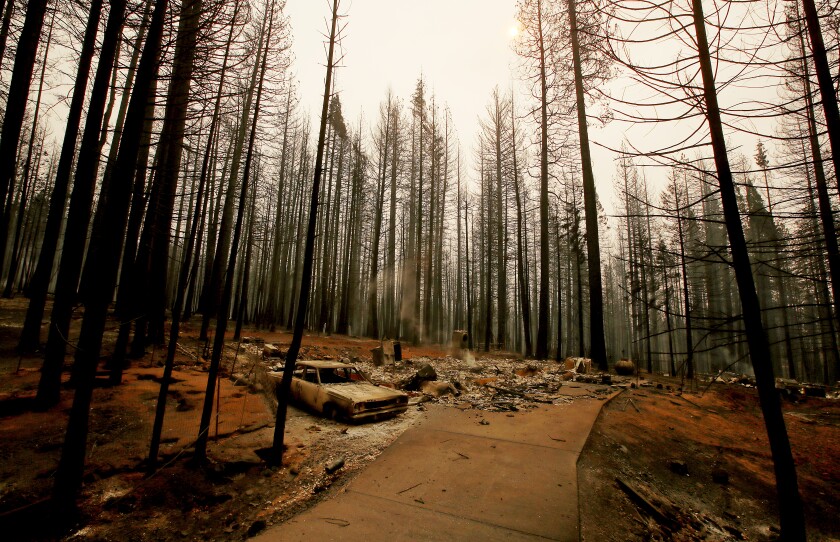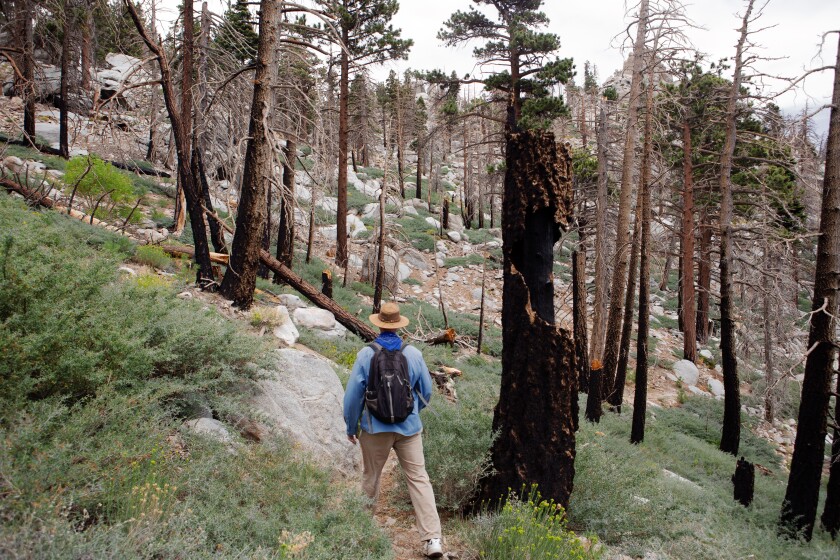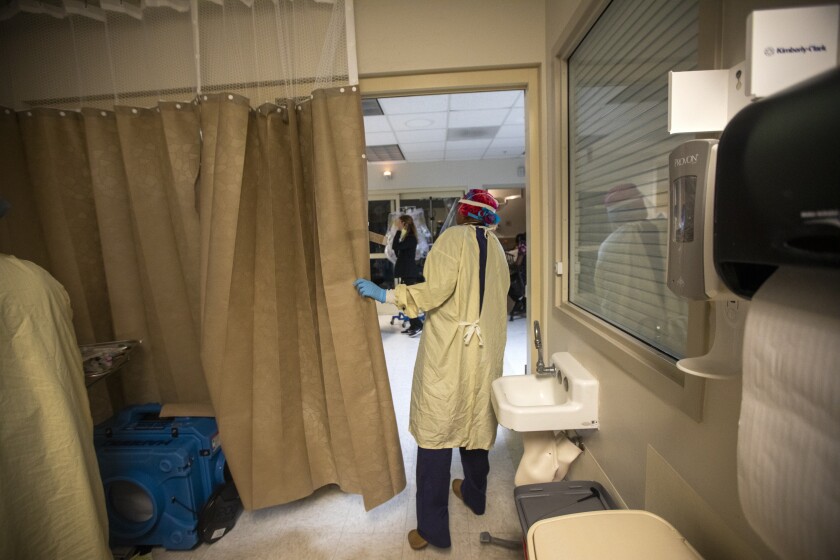Caldor fire burns over 400 homes as smoke chokes Lake Tahoe region

More than 400 homes have been destroyed by the raging Caldor fire, which grew to more than 100,000 acres over the weekend and continues to burn east of Sacramento and toward South Lake Tahoe, officials said.
The blaze, which is burning east of Sacramento through rugged terrain, was at 5% containment Monday morning after spreading for more than a week unchecked.
Strong winds gusting up to 40 mph spurred furious growth over the weekend, increasing the fire’s size by 15,000 acres Saturday and into Sunday morning.
The expansion of the blaze — now 106,562 acres — has slowed amid weaker winds, but flames continue to threaten more than 17,000 structures, according to the latest incident report.
Logging and thinning trees isn’t stopping wildfires, ecologists say. Focusing on homes can help avert more tragedies like Paradise and Greenville.
Much of the tallied destruction occurred in the Grizzly Flats area and surrounding communities, which the fire decimated several days after igniting on Aug. 14, said Capt. Jason Hunter, a spokesperson for the Caldor fire.
The town was a smoldering moonscape Sunday. Scorched trees lined the road like blackened toothpicks, some of them still burning from the inside. The smoky silence was broken only by the occasional thundering crack of one falling to the ground.
Downed power lines snaked alongside the streets. The post office was gone, its wheelchair ramp leading only to a pile of rubble. All that was left of the Grizzly Flats Community Church was its foundation and the twisted metal skeletons of chairs, still arranged in rows ready for service. The door was draped over the debris like a piece of melted cheese. Two Little Free Library kiosks near the road were untouched, the books inside them still intact.
On Monday, it was confirmed that 403 homes have gone up in flames across the burn area. Six commercial buildings and 148 minor structures were also destroyed, and at least 26 large structures have been damaged.
Winds, now around 7 to 10 mph, are still pushing the flames north and east, toward the southern end of Lake Tahoe. Smoke has choked the region, spurring “hazardous” air quality all the way to Tahoe City, along the northwestern shores of the lake, according to the air quality index.
Firefighters are focusing on containing the blaze west of Highway 89, an artery that borders the western edge of Lake Tahoe.
Chief Mike Blankenheim, of the California Department of Forestry and Fire Protection’s Amador-El Dorado unit, said the strategy will give fire personnel a wide area to attack the fire.
“We have no desire to let the fire get to Highway 89; we do not want to be fighting fire from Highway 89,” Blankenheim said during a community meeting Sunday. “The reason for making that move, like I said before, is to give our folks plenty of room to make different decisions and choose different places to fight the fire from.”
A spot fire ignited north of Highway 50 near the town of Kyburz and had grown to 250 acres by Monday morning. Firefighters were actively engaged in beating it back and protecting structures in the area, officials said.
“It’s still a concern, it’s still burning over there, but they were able to minimize the spread of it with those lines that are being put in — so more work on that today,” Hunter said.
Authorities have shut down a stretch of Highway 50 for the foreseeable future, and some nearby homes have lost power, fire officials said.
New evacuation orders were issued Friday in anticipation. On Saturday evening, the El Dorado County Sheriff’s Office asked for help finding Marvin Hardy Creel, a 57-year-old who was expected to have evacuated from Grizzly Flats. Authorities said Creel phone a family member on Wednesday but the call had poor reception. Repeated calls to his phone since have not been answered.
Authorities found his white Dodge pickup abandoned in the Grizzly Flats area.
Nearly 30,000 people have been evacuated amid the fire, one of several large blazes burning in California. Among those who have hunkered down in evacuation shelters were Frank and Jeannette Castaneda, who have been living out of their truck in the parking lot of a community center.
Frank, 73, estimated it was the sixth time they’d had to evacuate in the 35-plus years they’ve lived in the rural Pacific House community in the El Dorado foothills.
The Cameron Park Community Center was full Saturday, with 42 people staying inside and 27 more on the grounds. With the shelter at capacity, the Castanedas set up folding chairs under trees to spend the afternoon. Maggie, a Catahoula hound, was sprawled out on a dog bed between them. The animal had finally started to eat and was even sleeping a little bit, said Jeannette, 70.
Although fires used to force them from their home every 10 years or so, the couple said, the pace has picked up recently and the blazes have grown fiercer.
“The fires seem to be getting bigger and bigger every year,” Frank said.
The Caldor blaze is one of more than a dozen large wildfires raging across the state, and more than 1.54 millions acres have been charred this year, according to Cal Fire.
The view from Sacramento
For reporting and exclusive analysis from bureau chief John Myers, get our California Politics newsletter.
You may occasionally receive promotional content from the Los Angeles Times.






